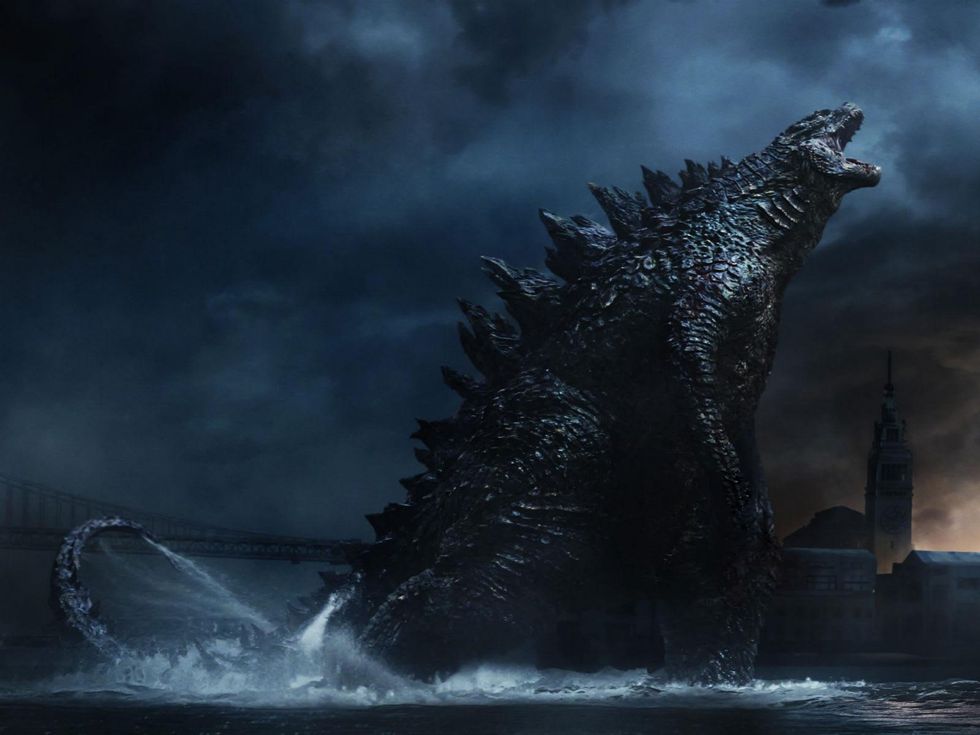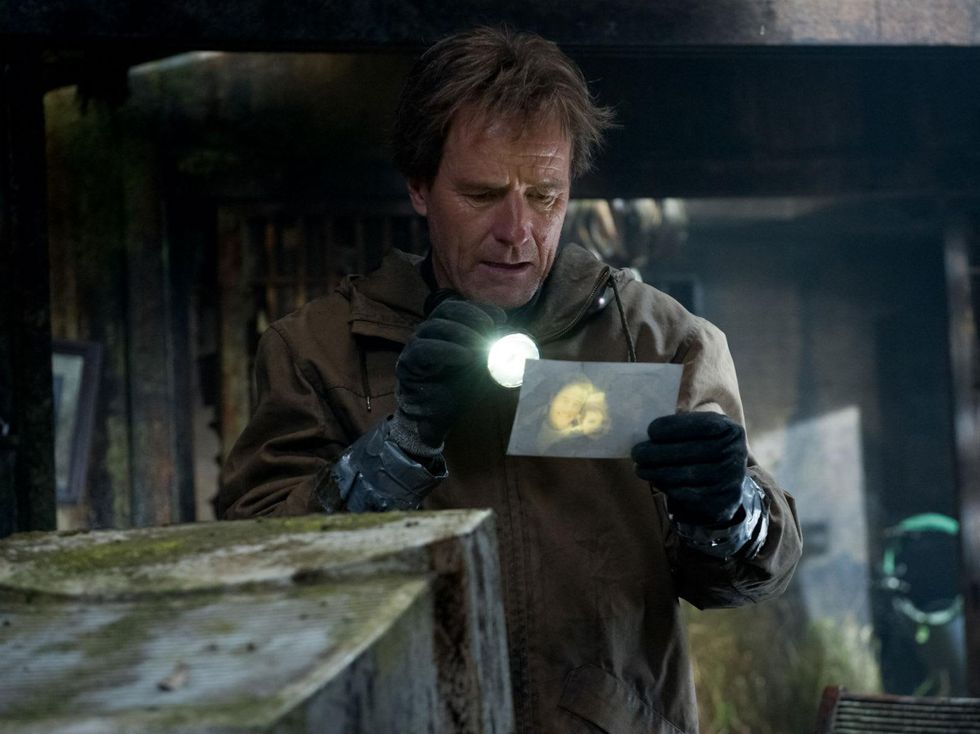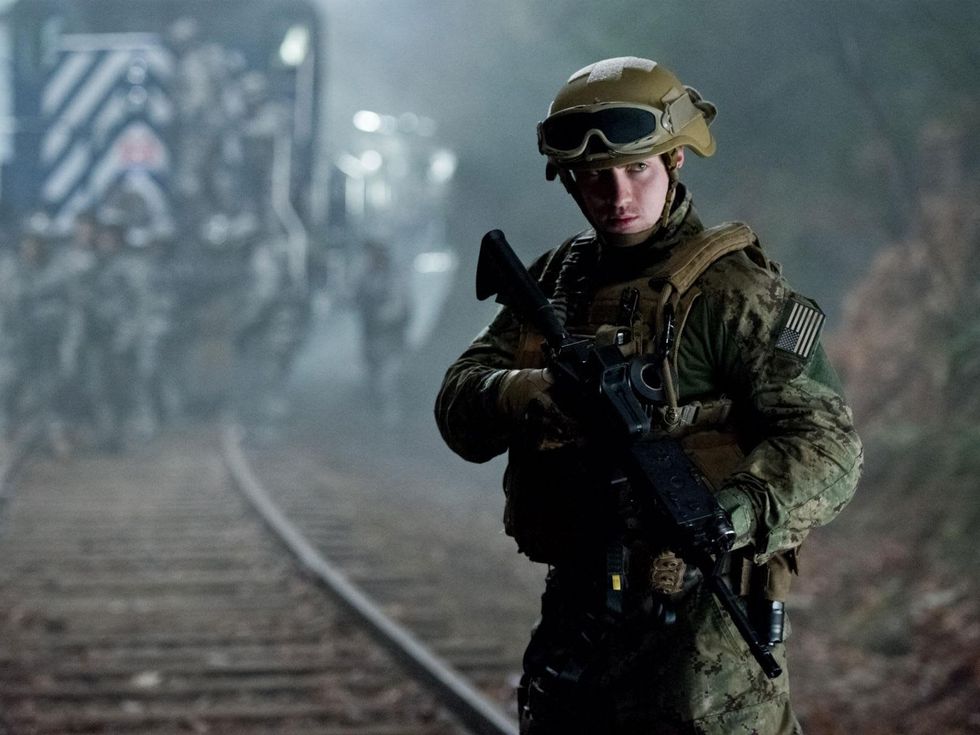Huge Summer Blockbuster
Godzilla delivers monster movie experience with pulse-racing storyline
The prospect of seeing another movie about Godzilla, especially for those unfortunate enough to have witnessed the 1998 Roland Emmerich fiasco, wouldn’t seem to be at the top of most moviegoers’ lists.
Now fully 60 years old, the nuclear-mutated monster had long been overtaken by a new breed of action movies. And yet, perhaps because the last American version was so bad, making Godzilla fearsome again still holds a certain appeal. That’s precisely what the new Godzilla does, although the way the film restores the creature to his former glory is unexpected, making it all the more thrilling.
Even though Godzilla causes great destruction, it never boils down to a strictly “mankind vs. monster” kind of movie.
The film establishes itself via Joe Brody (Bryan Cranston), a nuclear scientist who barely survives the destruction of a power plant in Japan. Fifteen years later, he’s still after the truth of what happened, and he’s joined in his quest by his son, Ford (Aaron Taylor-Johnson), a Navy lieutenant who’d rather be at home with his wife (Elizabeth Olsen) and his son.
Their search puts them into contact with Dr. Ichiro Serizawa (Ken Watanabe), who knows what they don’t: That the oceans hide a great beast he calls Gojira, and that the creature is not the only gigantic monster in the world that is a threat to humanity.
The filmmakers, led by director Gareth Edwards, do a lot right in this version of Godzilla, but the best thing they do is treat the material seriously. That’s not to say that the movie is a drama by any means, but it also doesn’t fall prey to the need to have secondary comic relief characters or the like. As much as I loved Pacific Rim, that quality was its one big flaw.
Edwards and his team understand that in a movie like this, tension is their best friend, and the groundwork for that is laid from minute one. In fact, they take so long to get to the action we think we came for that they could be accused of being teases. But by holding out until just the right moment to unleash hell, they guarantee that the audience is lathered up into a proper fervor.
The story also works because even though Godzilla and other creatures called M.U.T.O.s cause great destruction to several cities and are a real threat to humanity, it never boils down to a strictly “mankind vs. monster” kind of movie.
The humans want to take out the monsters because of the danger they pose to the humans’ very survival, but the monsters never seem consciously bent on destroying the world. It’s only due to their sheer size and innate ability to plow through anything in their path that they do so.
And unlike many apocalyptic films that came out in 2013, the massive damage the monsters cause is given the import and context it deserves. Large swaths of cities are destroyed, undoubtedly causing thousands of deaths. Even though we don’t see every single one of them, the film never takes those casualties for granted, either.
On the visual side, the filmmakers do wonders in translating the scale of Godzilla and the other monsters. Godzilla is literally larger than it’s ever been, and Edwards showcases its immensity with awe-inspiring close-ups and long shots. Not once does Godzilla or the M.U.T.O.s feel cheesy or anything less than terrifying.
The one glaring blemish on the film is the need to include Ford in nearly every big set piece. No matter where in the world the action goes, or in what extraordinary circumstance, Ford is there. Maybe it’s because Taylor-Johnson still has some Kick-Ass 2 stink on him, but his popping up anytime something big happened got a bit ridiculous.
Godzilla delivers on almost every level one expects of a summer blockbuster movie — and on several levels you don’t. The big guy is back, better than ever and ready to take on all-comers.




